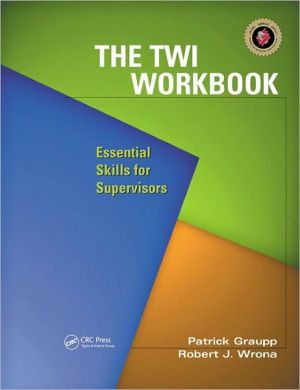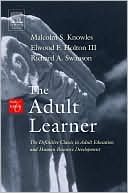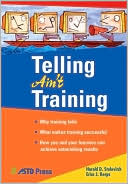The TWI Workbook: Essential Skills of Supervisors
Winner Of The 2007 Shingo Prize For Excellence In Manufacturing Research! "What can we do to make more people productively useful?"\ Striving to answer that question more than 60 years ago sparked the development of the most powerful training methodology that has impacted U.S. industry — Training Within Industry (TWI). During World War II, major production increases were demanded by the U.S. military - TWI, which trains supervisors, was developed comprising three separate programs:\ \ Job...
Search in google:
Winner Of The 2007 Shingo Prize For Excellence In Manufacturing Research! "What can we do to make more people productively useful?" Striving to answer that question more than 60 years ago sparked the development of the most powerful training methodology that has impacted U.S. industry — Training Within Industry (TWI). During World War II, major production increases were demanded by the U.S. military - TWI, which trains supervisors, was developed comprising three separate programs: Job Instruction — how to instruct employees so they can quickly remember to do a job, correctly, safely, and conscientiously Job Methods — how to improve methods for producing greater quantities of quality products in less time by effectively using available workforce, machines, and materials Job relations — how to lead employees so that problems are prevented and analytical methods are used to effectively resolve problems Toyota was the earliest company to adopt TWI after World War II, and this methodology planted the seeds for the development of the Toyota Production System — the gold standard of manufacturing excellence. In The TWI Workbook: Essential Skills for Supervisors, Patrick Graupp and Robert Wrona teach supervisors how to apply a four-step method for each of the three respective programs with numerous examples and exercises. In these exercises, supervisors will participate in hands-on application of the four-step method to actual jobs and employee problems from their own worksites. In addition, a CD companion includes blank forms needed to complete the exercises and implementation case studies.
Introduction Part One: TWI Fundamentals Chapter 1: Using TWI to Teach Lean Chapter 2: Fundamentals of the TWI Program Part Two: Job Instruction Method Chapter 3: The Four Steps of Job Instruction Chapter 4: How to Get Ready to Instruct-Break down the Job Chapter 5: How to Get Ready to Instruct-Make a Timetable for Training, Get Everything Ready, Arrange the Worksite Part Three: Job Methods Chapter 6: Applying Job Methods to a Sample Job to Show Before and After Improvements Chapter 7: The Four Steps of Job Methods Improvement Chapter 8: Writing and Selling the Improvement Proposal-Example Part Four: Job Relations Method Chapter 9: Job Relations-Working With and Through People Chapter 10: The Four Steps of Job Relations Chapter 11: Problem Prevention Using JR's Foundations for Good Relations Chapter 12: Sustaining Lean Through the TWI Connection Appendix: Training Trainers to Deliver TWI Readers of The TWI Workbook will be able to perform detailed step-by-step methods for the three most essential tasks people in management positions must perform: the ability to teach someone to do a job, the ability to improve on those jobs, and the ability to build positive employee relationships with the people they lead. Master Trainer, International Training, Sanyo Electric Co, Ltd (retired) 01/04/06
\ From the PublisherTWI was developed in the United States to accelerate training for World War II. It is basic industrial engineering with a twist: supervisors are teachers who work cooperatively with workers on the shop floor to teach them the job. While TWI largely disappeared from the American landscape shortly after WWII it was brought over to Japan where Toyota made this the foundation of its standardized work. Toyota evolved TWI to fit the unique philosophy of the Toyota Production System. This book brings TWI back to light outside Toyota and illustrates its contemporary power through detailed case studies. As the authors correctly note the disciplined training of workers by supervisors (group leaders) is a missing link in most implementation of lean production.\ —Professor Jeffrey Liker, University of Michigan, Shingo Prize-Winning Author of The Toyota Way\ In the face of intense global change, first line supervisors, in order to objectively take charge of their own circumstances, must develop fundamental supervisory skills. Based on a respect for humanity and the scientific approach, TWI represents fundamental and rational supervisory skills that were widely adopted by Japanese industry and became the driving force behind its industrial development. Coming through the confusion that followed the collapse of Japan's economic bubble, the value and importance of TWI is again being recognized and it is quickly being reestablished throughout Japan. Furthermore, we are seeing genuine development of the program in Japanese industries operating throughout Asia.The Japan Industrial Training Association has been the primary promoter of TWI in Japan since 1950. After 60 years, we have great hopes that, with the earnest reevaluation of TWI in the U.S.A. where it was developed, we might see a worldwide trend toward TWI training. The publication of this book is a major step in that direction.\ —Kazuhiko Watanabe, Managing Director, Japan Industrial Training Association (JITA)\ If companies would spend half the time on developing these essential skills in the supervisor ranks that they spend on conducting Value Stream Mapping or Kaizen Workshops today, I am convinced that they would not only achieve more impressive results but the results would stick better as well.\ —Art Smalley, Shingo Prize-Winning Author, President, Art of Lean, Inc., and Former employee of the Toyota Motor Corp., Japan\ Patrick Graupp and Bob Wrona teach us how to "learn by doing" the TWI methods that are necessary if a business leader desires to make the leap to a higher level of operational performance.\ —Jim Huntzinger, TWI Trainer, Lean Accounting Summit and Highland Path\ Patrick Graupp has a long career teaching and leading the TWI program. Immediately upon arriving in Japan in 1980 he took up the promotion of TWI and helped introduce it to Sanyo plants throughout the world. After returning to the U.S., he exhaustively promoted TWI there and became a rare and exceptional instructor. He has a thorough understanding of the TWI courses and a rich experience teaching them which makes him the best person today to reintroduce TWI to the U.S.A.\ —Kazuhiko Shibuya, TWI\ \ \








